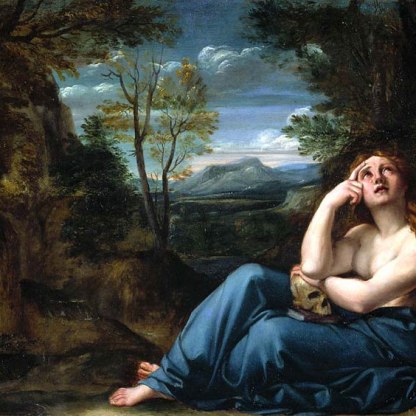Time, thou great devourer, and thou, envious age, together you destroy all things.
Ovid, Metamorphoses, Book 15, 234–5
In the sixteenth and seventeenth centuries, artists, particularly in northern Europe, were preocuppied with the transience of human life and endeavour. Although it is not certain whether the ruined Colosseum in Heemskerck's painting has any symbolic meaning, classical ruins were often used in art and poetry to demonstrate impermanence. The intense admiration for Greek and Roman antiquity that characterised the Renaissance was tempered by a sense of melancholic awe that such magnificent works of art and buildings could fall into such disrepair.
The lines by Ovid quoted above are to be found inscribed on a drawing by a travelling companion of Heemskerck, which depicts the ruins of ancient Rome. In Heemskerck's painting, the mighty amphitheatre, which once echoed to the sounds of gladiatorial combats and the cheers of 50,000 spectators, is a hollow, crumbling shell, literally gone to seed, peopled by shadowy, insubstantial figures.
The seventeenth-century Genoese artist Castiglione summed up the tragedy of ancient Rome's faded legacy, in an emotional sonnet:
Proud hills, and you, sacred ruins, who bear of Rome alone her name, ah, what miserable relics of so many pilgrim souls! Colossi, arches, theatres, divine works, joyous and glorious triumphal pomp, in little time you are converted to ashes, and made in the end the vile laughing stock of the mob!









